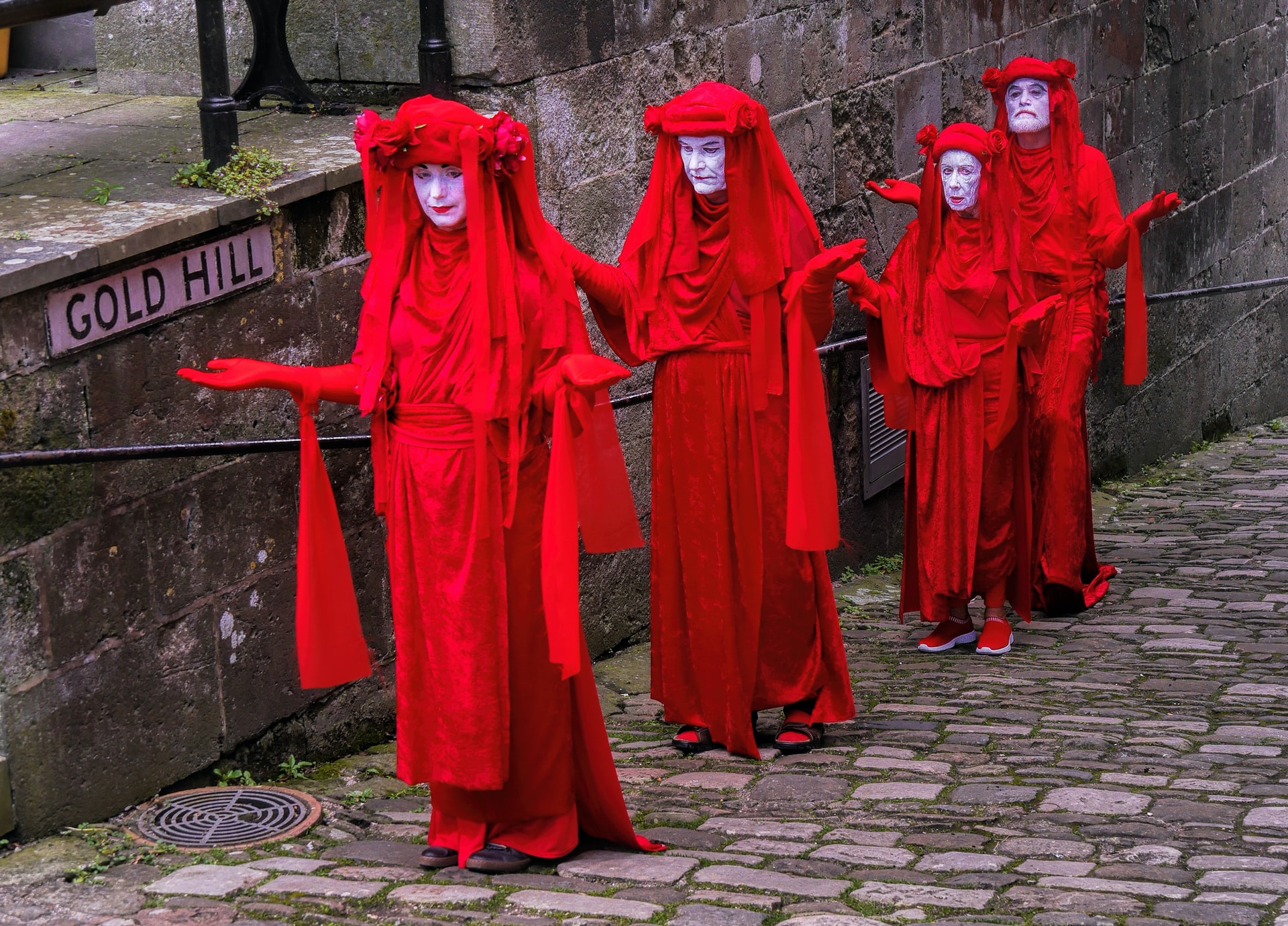4.5. Cultural transformation

4.5. Cultural transformation
A cultural transformation aligned with the aims of just transition requires attentive work on emotions, values, and world views. Even though there is an urgent need for concrete changes, cultural matters affect society on such a deep level that is worthwhile to step back and consider them. For the purposes of just transition, identifying emotions, values and world views can provide a necessary inward gesture that supports outward action: as one needs to take a deep breath before carrying out a demanding physical exercise, one should take a pause to perceive the moment at hand as well as one's own experiential state and to concentrate on what is important.
Art and other cultural activity can be considered as communal ways of pausing to consider emotions, values, and world views. For example, concerts, theatre and dance performances experienced together can be powerful bonding forces that evoke many emotions and thoughts and may help to conceive of current (and eternal) themes in a new way. Cultural interests, such as reading, playing games, handicrafts, dance, music, or art in all forms, are important for relaxing and creating meaningful relations with the world and others. Cultural interests are therefore an essential part of the ecosocial education that was outlined in the previous chapters: they help to lead a meaningful life in which material wealth or consumption are not the main goals. In this way, art and cultural products can create channels to sustainable lifestyles and well-being.
Art and well-being
Cultural researchers Mari Aholainen, Saara Jäntti, Annika Tammela and Jani Tanskanen have compiled the effects of art on well-being. They state the following:
“Art can help one to put themselves in the position of another person and evoke empathy towards their suffering. Literature, art, and cultural products can increase understanding of what illness and well-being mean to human beings. Similarly, they can help to accept human diversity and tolerate the uncertainty of life and the ambiguity of things.”
According to Aholainen, Jäntti, Tammela and Tanskanen, artistic activity can improve the quality of life of medical patients through reducing the need for medication, improving mood and physical condition, and reinforcing social relations. Artistic activity may also create experiences of social connection which can help to form broader connections with nature as well.
In these ways, art and cultural products or cultural experiences can increase well-being. Consequently, they can help both their makers and experiencers find meaning in their lives and shift from a society that is centred around the consumption of matter towards a pattern of producing and consuming services and experiences. Scholars have also argued that through art, such as literature, one can attempt to place themselves in the position of animals, imagine solutions for environmental crises or deal with the uncomfortable emotions caused by these crises. We have presented some of these arguments in chapters 3.3 and 3.4.
At the same time, it must be remembered that no form of art inevitably or automatically produces such positive effects. Instead, active engagement with art is needed, on the part of both the makers and the experiencers. Artistic practices can also direct people towards destructive ways of thinking and action, and hence they must always be understood as morally neutral and as intertwined with other aspects of society and social life. In other words, art does not automatically, say, guide a person towards more ecologically sustainable models of behaviour. It is also important to remember that the meaning of art cannot be traced back to its benefits: it is one way of being in the world, exploring the world, self-expression and relating. Attempts at harnessing creative practices to only serve some societal or political purpose lead to advertisement or propaganda, not art. Art should also be difficult, dull, useless, and hopeless, and it also must be considered intrinsically valuable. In culture, as in biodiversity, diversity is valuable in itself.
Art as collective
In the age of environmental crises, many artists work together with non-artists. In such collective art or community art, the roles of the artists and the audience are understood in a different manner than in, for example, theatre performed on a stage: it is an encounter in which every participant has an active role. The artist may direct the collective activity or create the framework for it.
A well-known example of collective art of the environmental crises is the performance activity of the Extinction Rebellion movement. The protests, or so-called actions, are often organised in the form of art performances. For example, in the Red Rebel Brigade, characters dressed in red walk slowly and silently through the city. According to the Extinction Rebellion, the red outfits symbolise the death related to the environmental catastrophe, such as mass extinctions. At the same time, the Red Rebel Brigade “expresses the emotions of sorrow, pain and agony as well as hope, compassion, love and peace related to the environmental crisis”. Jaana Lahti, one of the performers who participated in the performance in the fall of 2021, associates artistic activity also to coping with environmental emotions:
“The extreme weather phenomena of last summer have increased environmental anxiety. I feel that anxiety is a dynamic emotion; through art, I can manage it and other emotions related to the environmental crisis. After the summer I have increasingly longed for a community to express these emotions together with, and here it can be done in a beautiful, silent procession.” (An announcement from the Extinction Rebellion, 2021 (in Finnish) )

Image. Four participants of the Red Rebellion Brigade walking on a street, dressed in red clothing, their hands extended, and their faces painted white. (Photo by Andy Newton on Unsplash. Free to use under the Unsplash License.)
The performances of the Extinction Rebellion often also include naming, remembering, and conscious mourning of creatures that are under the threat of extinction or have become extinct. For example, in the Red Rebellion Brigade in the fall of 2021, included a large piece of art depicting Andrena humilis, a Palearctic species of mining bee. The “red list”, i.e., a list of the most endangered species, is read aloud at many events.
The cultural transformation of the just transition also involves many collaborations between artists and researchers. In the final section of the course, we will introduce research projects in which art has an essential role.
The culture of planetary well-being
If communities work together to develop ways of living that could fit on one planet, and world views that ensure the possibility of well-being for all life, we can talk a about a culture of planetary well-being. In that hypothetical case, cultural activity, including artistic activity, furthers social and ecological sustainability. It provides opportunities for stepping back, for creativity, for recreation and joy, and for creating meaningful relations. Here, culture should also be understood in the broad sense – as ways of living and sets of values.
Botanist and philosopher Robin Wall Kimmerer, who has been introduced in previous chapters, has suggested that at its best, the reconstruction of cultures and that of natural environments support each other. This is called biocultural restoration. For example, restoring environments polluted by industrial activity, and maintenance work that respects the well-being of ecosystems, enable local communities both to develop meaningful practices and to care for local nature. By taking such small steps, a path to a culture in which respectful and reciprocal relations with the earth are valued, that is, a culture that promotes planetary well-being, can be created.
Would you like to comment something on this section? Voluntary.
